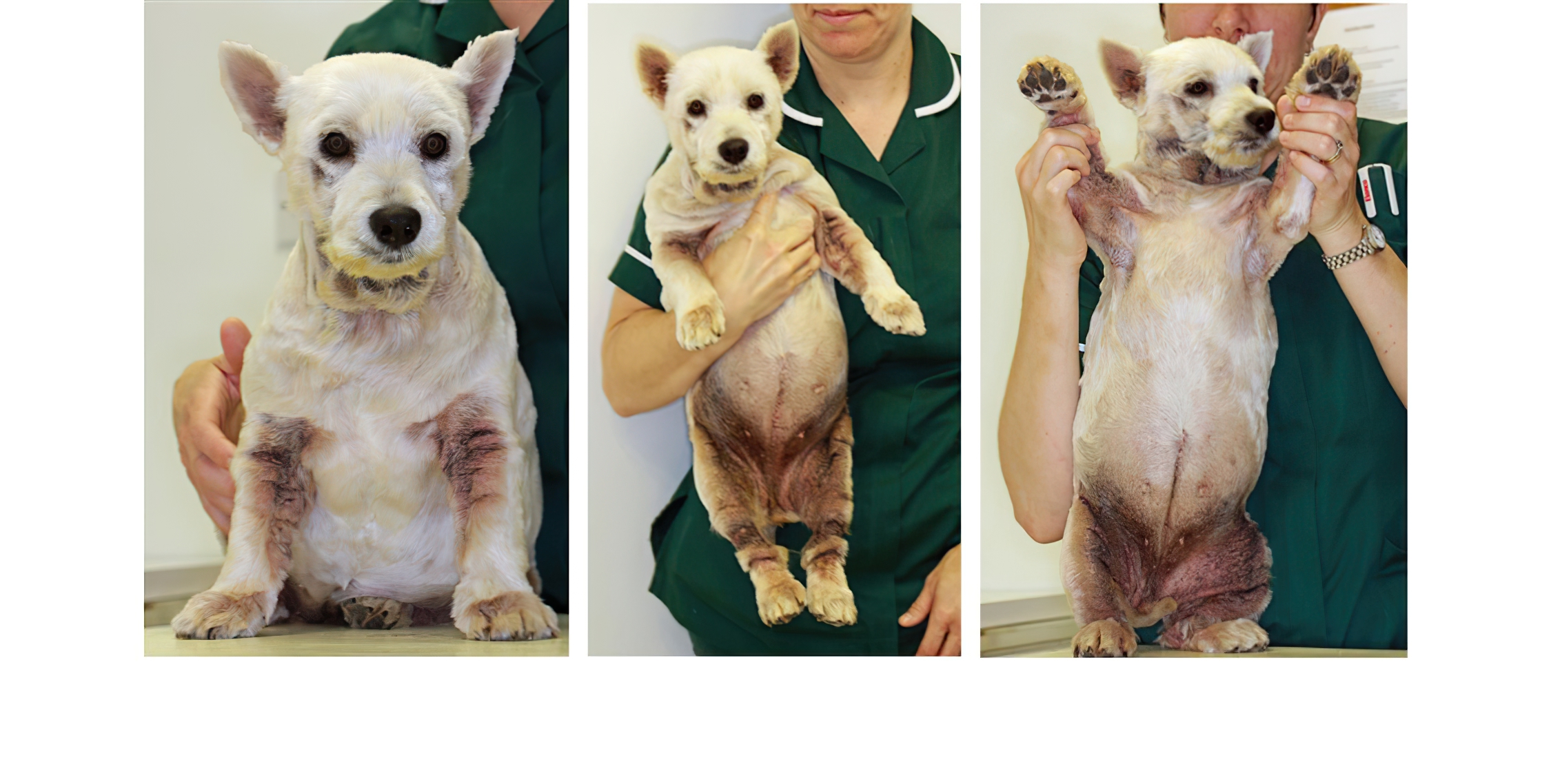
Have you ever heard about the disease atopy in dogs? Want to learn more about it? You’ve reached the right spot! This is exactly what we are going to uncover today! Keep reading!
What is Canine Atopy?
Atopy is a complex and multifactorial disease, where genetic and environmental components play a very important role. It can negatively influence your quality of life and that of your pet to an equal degree.
Causes and Diagnosis
At the root of the development of skin diseases are three main groups of factors:
- Parasites
- The Environment
- Nutritional
For the diagnosis, it is crucial to exclude the existence of parasites, we must eliminate them if they are detected, however their prevention is fundamental, hence the need to develop together a deworming plan adapted to the lifestyle of your pet, according to your preferences and taking into account the variety of prophylactic options available on the market.
Signs of the Disease
Canine atopic dermatitis is essentially characterized by the presence of inflammation and dismemberment, i.e. a lot of itching and redness, and skin sores may even appear.
It is very important to differentiate the lesions present and identify if they are primary, secondary or self-induced due to the degree of itching and discomfort.
Food allergies can present with skin manifestations, but environmental causes top our list of differential diagnoses.
In a simplified way, two situations can occur, structural and functional changes in the skin barrier that allow the entry of allergens or an inappropriate immune response of the pet’s body that leads to an abnormal inflammatory reaction due to the presence of different allergens in the skin.
Between 6 months and 6 years of age, the symptoms that signal an atopic dermatological pathology begin to appear, in 68% of cases they appear before 3 years of age. In the French Bulldogs and Shar-peis, the clinical signs appear in the very young animals. The hot climates and the strong environmental concentrations of pollens and allergens contribute to the appearance of the signs in increasingly young animals.
Unfortunately, there is no standard but there are several warning indicators. Usually signs are present throughout the year, 30% of cases begin with a seasonal presentation. Pruritus is the first sign, it can be moderate to intense even without the presence of skin lesions.
It is important to know when the animal begins to show discomfort, even if we cannot identify a lesion, in order to act effectively and significantly reduce the loss of quality of life inherent in the disease.
The type of lesion is not necessarily characteristic but its distribution/location is strongly suggestive of atopy. Ventral areas with lower hair density, such as the axillae, inguinal region, and interdigital spaces, also have lesions on the lips, periocular region, auricular region, and elbow flexion area.
Otitis externa may be the first sign, usually the edges of the ear are not affected. If your dog is shaking his head more often or stopping in the street while walking to scratch his ear, you need to activate his alert system, there is something wrong with him.
Serious Secondary Diseases
Canine atopic dermatitis predisposes to the development of serious secondary diseases such as food allergies (often with associated gastrointestinal disorders), hypersensitivity reaction to flea bites, contact dermatitis. Due to the degradation of the skin barrier, which is the body’s first defense barrier, opportunistic infections by bacteria and fungi appear. Rhinitis, sneezing, alteration of the reproductive cycle are also described, but less frequently.
Treatment
There is no magic therapeutic formula, we must work together to find the right combination between:
– Medications (antibiotics; antipruritic; antifungals);
– Reducing exposure to environmental allergens (cleaning the home environment;
– Regular bathing with proper shampoo…);
– Improving the quality of the skin barrier (supplementation with essential tastes; baths);
– Lifestyle-appropriate parasite control;
– Nutrition;
It is imperative to develop a relationship of trust and cooperation between the owner and the treating physician because the diagnosis can be long and exhausting as well as the treatment.
Remember that this is a chronic disease that can relapse with an exacerbation of the clinical signs. The common goal is to restore the animal’s lost quality of life as quickly as possible and for as long as possible. It is a long and continuous journey that we are taking side by side.
Did you find out that your pet has atopy? What have you been doing? Share your tips in the comments below.







